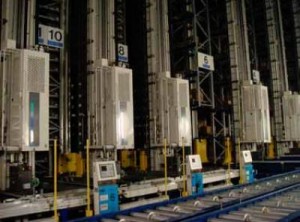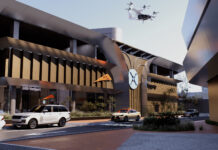Source: www.bus-ex.com
After years of planning, design and construction, Singapore’s sophisticated new driverless Circle Line metro system is ramping up to full operation. Khoo Hean Siang, executive vice president at multi-modal transport company SMRT, explains to Gay Sutton how the knowledge and experience gained from operating and maintaining the majority of Singapore’s rail systems is benefiting rail projects across Asia.
 Providing transport services to the discerning public of Singapore, Asia’s most sophisticated and cosmopolitan nation, is a challenging but rewarding task, and one that SMRT has been performing since 1987. A truly multi-modal transport company, SMRT’s operations encompass three rail networks and a light rapid transit, an extensive bus service and taxi services, as well as engineering, project management and consultancy services.
Providing transport services to the discerning public of Singapore, Asia’s most sophisticated and cosmopolitan nation, is a challenging but rewarding task, and one that SMRT has been performing since 1987. A truly multi-modal transport company, SMRT’s operations encompass three rail networks and a light rapid transit, an extensive bus service and taxi services, as well as engineering, project management and consultancy services.
All of this is managed through three executive vice presidents: one to oversee the operation and maintenance of railways as well as engineering, consultancy and product services; a second to oversee the commercial operations, taxi and bus services; and the third to manage the company’s finances.
The company’s origins can be traced back to 1987 when the government formed Singapore MRT within MRTC (predecessor of the railway arm of the Land Transport Authority, or LTA) to run its newly built 52-station subway system. A group of senior MRTC officers were transferred to SMRT to form the core team for this purpose. Both SMRT and MRTC were then under the same executive director; and it wasn’t until 1995—when MRTC was hived off to become part of LTA—that SMRT came into its own as an independent corporate entity.
Until then, SMRT was essentially a train business; but after merging with Trans-Inland Bus Services, or TIBS—basically a bus and taxi business—in 1999, it grew into the rail, taxi and bus business we know today. In 2000, SMRT became publicly listed on the Singapore Stock Exchange.
“There were changes in our top management in 1995,” explains Khoo Hean Siang, executive vice president, trains. “Having begun as a statutory body, we moved to a more dynamic and commercially minded leadership.” Diversification into bus and taxi services quickly followed after the merger with TIBS in 1999, and by 2003 under a new CEO, the company had begun to exploit the previously under-utilised commercial spaces at its MRT stations and terminals, renting them out as retail outlets. Perhaps one of the most impressive of these is the Raffles Xchange, an underground shopping mall refurbished in 2005 at the Raffles Place MRT Station, one of the busiest stations in the central business district within the national network and laying adjacent to the legendary Raffles Hotel. There has also been more creative use of the advertising space. This has resulted in the company’s earnings increasing three-fold.
However, along with privatising SMRT, the government also decided to take a new approach to the rail transport system and introduce competition. Previously, all new rail systems would have been handed over to SMRT to operate and maintain; but in 1998, when the new 16-station North-East Line was still under construction, the government invited a selection of other companies to bid for the licence but asked SMRT to refrain from bidding. The winner, SBST, has since become another rail operator.
In 2000, however, when the government did not exclude SMRT during the tender for the operation and maintenance of the prestigious new Circle Line, SMRT won the franchise to operate and maintain the system for an initial period of 10 years, to be renewed for another 30 years subject to good performance. The 34 kilometre Circle Line system, including the extension, is a driverless, completely underground system using state-of-the-art technology, with 31 stations linking Singapore’s thriving commercial and business centre to all the radial transport routes, tourist, leisure and the old residential areas, before finally terminating at the Harbour Front Station. When the fourth and fifth stages of the Circle Line become operational in October this year, it will be the world’s longest fully automated underground metro system, and is expected to carry half a million passengers a day on its three-car trains. The opening of the Circle Line Extension is expected in 2012.
The line also delivers another interesting record. “We now have one of the deepest underground depots in the world, Kim Chuan Depot, which has the capacity to accommodate up to 70 three-car trains,” says Khoo. The depot performs multiple functions—not only is it the maintenance centre for the rolling stock and network, but it also houses the system’s vital operations control centre, and is the main storage facilities for materials and parts as well as for stabling some of the trains for the Downtown Line.
“For operational efficiency and cost effectiveness, we have exploited the driverless technology and stabled some trains outside Kim Chuan Depot,” he continues. “The rationale behind this is that it will enable us to conserve energy. It takes power to return the trains to the depot when the operations close down at night; therefore, we will park them at strategic locations on the network and send our staff out to clean them. Before sending the trains out for service every morning, the health status of the train is first checked remotely at the operations control centre and only after they are confirmed fit for service will they be sent out by activation of a button. Thereafter the trains will operate according to the timetable to meet the needs of the commuters.”
Safety, service quality and efficiency are top priorities for SMRT. Having had the opportunity of being involved in the design review of the Circle Line and participating actively throughout the project implementation stage since winning the contract in 2000, SMRT has used its past operating experience to benefit the Circle Line system, incorporating more user friendly features. This has been made possible through the success of the working relationship established with LTA and the contractors. In addition, after the line was handed over by LTA to SMRT, SMRT also put the system through a programme of extensive preparation, and testing began. “We simulated and practiced all the possible incidents that could occur, and developed processes so that we will be able to recover from them in the shortest possible time,” Khoo explains. The system is now being opened section by section. “We continuously improve service quality of sections opened at a later stage using lessons learnt from the previous stages.”
The new Circle Line has also been a catalyst for change on SMRT’s other rail operations—the original North-South and East-West MRT lines and the small automated Bukit Panjang LRT line. “A large part of our work involves maintaining and upgrading our trains and technology, and our engineers are in the process of replacing the fixed block signalling technology on the older lines to the new moving block signalling system that has been installed on the Circle Line. Although it requires substantial capital investment, we consider it a necessity because it will deliver significant improvements to our customer service and reliability, and cost savings in terms of maintenance,” Khoo says. “At the moment we are also operating the signalling from two control centres, but we will be merging these and housing them together at the underground depot. This will improve our coordination between the lines, resulting in overall operational efficiency and better customer service.”
All this work requires a significant engineering team, and of the 6,200 staff employed across all divisions of the SMRT Corporation, 450 are highly trained graduate engineers attached to the train division. Some 200 undertake the daily maintenance work and the remaining 250 work on projects, system upgrades and the development of new technology. “Our strategy is to ensure we have a robust succession plan in place for our engineering capability. Therefore younger engineers begin in the maintenance department, learn the ropes and then progress to the project group, where a lot of technical experience and knowledge is required.”
One of the significant achievements of the project group, and one which offers considerable opportunity for future revenue growth, has been the development of a sophisticated automatic fare collection system boasting robust detection and high durability, as well as environmental friendliness and cost effectiveness. “We will be installing these gates throughout the MRT network to replace the existing obsolete gates,” Khoo reveals. The company’s focus now is on taking the technology to the wider world. “We first took the product to market some six years ago but we were not very successful. However we have since learned how to be more market orientated and competitive, and we will be taking the product back out into the Asian market.”
Over the years, SMRT has acquired considerable knowledge and experience of designing, operating and maintaining both driven and driverless MRT systems, and has a growing consultancy arm that offers advice on all aspects of MRT, from initial design and specification through to operations and maintenance. Among the many international projects it has worked on to date are the Palm Jumeirah monorail in Dubai which it also operated for three years, and MRT systems in Korea, Mumbai, Chennai and Ho Chi Minh City.
With significant rail development planned for countries such as Vietnam, Malaysia, the Philippines and Thailand, Khoo sees tremendous opportunities for growth. “Looking forward, our focus will be on operations, consultancy and product development, and we should be able to make significant headway in the world arena,” he concludes.

















